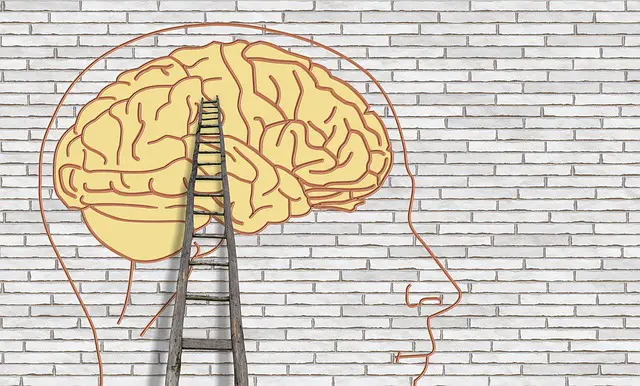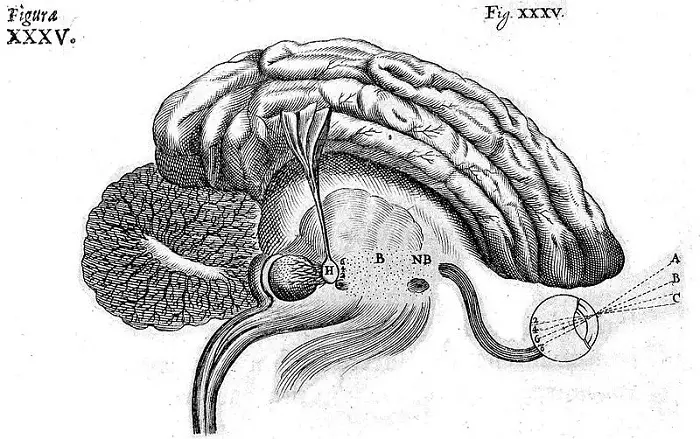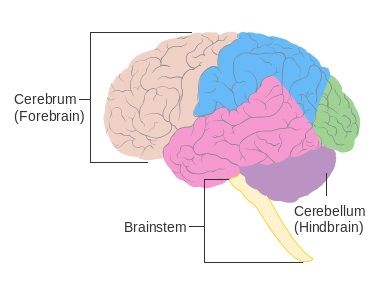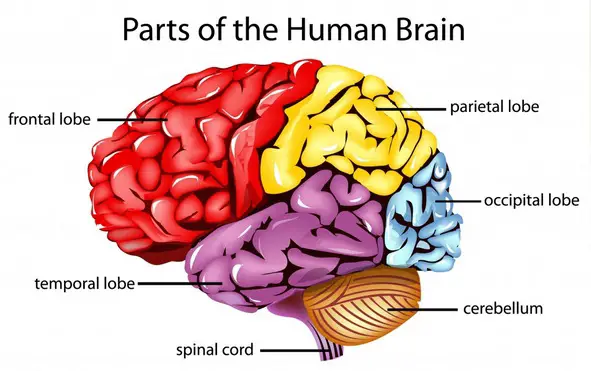Biological Psychology

A good way to start studying Psychology is to understand the human brain and how it works. Biological Psychology enables you to learn about the mental processes and how they are related to human thoughts and behavior. Read on and discover the wonders of what is considered the body’s most complex organ.
Click below to go to the main reviewer:
Table of Contents
- A Brief History of Biological Psychology
- Subfields of Biological Psychology
- Understanding the Human Brain
- References
- Download Article in PDF Format
- Test Yourself!
A Brief History of Biological Psychology
The relationship between the mental and physical world has always been a topic of hot debate even in ancient times. While Aristotle argues that the heart is the source of one’s thoughts and feelings, Hippocrates and Plato believed otherwise. For them, actions and thoughts come from the brain where the human mind can be found.
Charles Darwin made conclusions as well about the connection of genes and evolution to behaviors in his theory of natural selection. On the other hand, Rene Descartes likened the human mind and body to a machine, asserting that the brain is responsible for both behavior and thinking.

Although some of these past ideas have already been refuted, it is with no doubt that these have helped establish the foundations of what is now known as biological psychology.
When the structuralist and functionalist perspectives became dominant during the 1800s, biological psychology came into the picture too.
Biological psychology (sometimes referred to as physiological psychology or biopsychology) states that actions are run by the central nervous system and its main goal is to seek to understand how the human mind works. Its interest is to discover how biology, genetics, and physiology bear an impact on the human mind and its behaviors. Moreover, it is particularly looking into biological processes that affect the individual’s mental processes such as emotions and cognitions.
Subfields of Biological Psychology
With the advancement of technologies came also the furtherance of research studies on the brain. There are other subfields under biological psychology and these are composed of cognitive neuroscience, behavioral neuroscience, and neuropsychology.
Cognitive neuroscience wants to know how the living brain works to support one’s mental processes. As the name suggests, this field aims to trace the mechanisms (brain structures and activities) behind cognitive processes. In addition, it analyzes several psychiatric and neurodegenerative disorders by examining deficiencies in the neural systems.
Behavioral neuroscience combines neurobiology (study of cells in the nervous system and how it processes information and directs behavior) and neurophysiology (concerned with how the nervous system functions) in studying the influence of the brain on an individual’s behavior. Central focus covers the nerve cells, neurotransmitters, and neural circuits, which are crucial in investigating the biological processes that reinforce behavior.
Neuropsychology inspects in greater detail the brain components and how each of them performs its tasks instead of just concentrating on the nervous system as a whole. By looking at the brain elements one by one, it will be able to make conclusions on how it relates to human thoughts and behaviors. A trained person in this field is able to treat a list of neuropsychological conditions like learning and attention deficit disorders.
Understanding the Human Brain
Cerebrum, cerebellum, and brainstem are the three main parts of the human brain. The largest brain component is the cerebrum and it helps in doing higher functions like problem-solving, thinking, emotions, and learning. Sitting under the cerebrum is the cerebellum, which coordinates muscle movements and controls posture and balance. The last part is the brainstem that connects the brain and the spinal cord while assisting automatic functions.

The brain and spinal cord make up the human’s central nervous system. It is called central for the very reason that it plays a major role in controlling most, if not all of the bodily functions that are essential in one’s day-to-day living. The spinal cord acts as the channel from and to the brain but it can also respond on its own through reflexes.
The brain is composed of billions of neurons (nerve cells) and glia. The former is responsible for transmitting signals and commands while the latter provides support and protection to the neurons.
The surface of the brain (cerebral cortex) has distinct bumps or folds (gyri) and grooves (sulci) that serve as dividers that separate the functional centers. A sulcus termed as longitudinal fissure parts the brain into two halves: the left and right hemispheres. The right hemisphere controls the body muscles on the left side and the left hemisphere manages the opposite side. These two hemispheres communicate through neural fibers called the corpus callosum.

Aside from the hemispheres, the brain has four lobes, each with unique tasks: frontal lobe, occipital lobe, parietal lobe, and temporal lobe.
- Frontal lobe (motor cortex): for expressive language, motor skills, and higher levels of cognition
- Occipital lobe (visual cortex): for visual stimuli interpretation and information
- Parietal lobe (somatosensory cortex): for tactile sensory processing like touch, pain, and pressure
- Temporal lobe (auditory cortex): for sounds and language interpretation
All the nerves coming from the brain and spinal cord that extend to the rest of the part of the body are part of the peripheral nervous system. Its two parts are the somatic nervous system whose main work is to control the skeletal muscles and the other part is the autonomic nervous system (ANS). The ANS guides the body’s automatic processes (such as breathing and blood pressure) and it is further subdivided into the sympathetic nervous system (for the fight-or-flight response of the body) and parasympathetic nervous system (for bringing the normal state of the body).

Other deep structures of the brain are the following:
- Hypothalamus: interferes with behaviors like hunger, sexual responses, and emotions
- Medulla oblongata: respiratory, digestive, and cardiovascular control center
- Pituitary gland: for the body’s endocrine glands
- Pineal gland: secretes melatonin for the internal body clock and other circadian rhythms
- Thalamus: regulates emotional behavior, attention, and alertness as it is the “way station” for sensory information
- Basal ganglia: for motor behaviors
- Limbic system: for learning, emotion, and memory, combines higher mental functions with emotions that are primitive
- Hippocampus: for memory formation
- Amygdala: the brain’s emotional center
References
Bartleby.com. (n.d.). Descartes Influence on Psychology. Retrieved from https://www. bartleby.com/essay/Descartes-Influence-on-Psychology-PKAVFKA8C3DW
Cherry, K. (2021). The Role of the Biological Perspective in Psychology. Retrieved from https://www.verywellmind.com/what-is-the-biological-perspective-2794878
Kayser, A. and D’esposito, M. (2017). Neuroscience and Biobehavioral Psychology. Retrieved from https://www.sciencedirect.com/referencework/9780128093245/ neuroscience-and-biobehavioral-psychology
Lumen. (n.d.). Parts of the Brain. Retrieved from https://courses.lumenlearning.com/wmopen-psychology/chapter/outcome-parts-of-the-brain/
Mayfield. (n.d.). Anatomy of the Brain. Retrieved from https://mayfieldclinic.com /pe-anatbrain.htm
Mcleod, S. (2005). Biological Approach. Retrieved from https://www.simplypsychology.org/ biological-psychology.html
Walinga, J. (n.d.). Introduction to Psychology – 1st Canadian Edition. Retrieved from https://opentextbc.ca/introductiontopsychology/chapter/2-1-biological-psychology-structuralism-and-functionalism/#footnote-1247-2
Next topic: Sensation and Perception
Previous topic: Development of Psychology
Return to the main article: The Ultimate Social Science Reviewer
Download Article in PDF Format
Test Yourself!
1. Practice Questions [PDF Download]
2. Answer Key [PDF Download]
Written by Arleia Agustin
Arleia Agustin
A graduate of Bachelor of Arts in Sociology, Arleia Agustin took interest in research and writing during her collegiate years. The time she spent at the University of the Philippines Los Baños taught her the essence of social sciences, to understand the society in each of its facets, and to believe that it could be changed for the better. She loves to read, dream, observe and discover beautiful stories of the people she encounters.
Copyright Notice
All materials contained on this site are protected by the Republic of the Philippines copyright law and may not be reproduced, distributed, transmitted, displayed, published, or broadcast without the prior written permission of filipiknow.net or in the case of third party materials, the owner of that content. You may not alter or remove any trademark, copyright, or other notice from copies of the content. Be warned that we have already reported and helped terminate several websites and YouTube channels for blatantly stealing our content. If you wish to use filipiknow.net content for commercial purposes, such as for content syndication, etc., please contact us at legal(at)filipiknow(dot)net